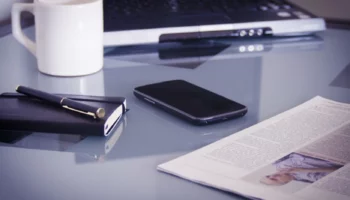Stress doesn’t always come in big waves. Sometimes it sneaks in during traffic jams, before a big meeting, or when your to-do list feels endless. While long-term strategies like sleep, exercise, and mindfulness are essential, there are also quick relaxation techniques you can use to calm your mind and body in the moment.
Think of these as your “stress first aid kit”—simple, practical tools that bring fast relief when you need it most.
Why Quick Stress Relief Works
When stress hits, your body activates the “fight-or-flight” response: heart rate spikes, muscles tense, and cortisol floods your system. Quick relaxation techniques work by activating the parasympathetic nervous system—the body’s natural rest and digest mode—helping you reset in minutes.
7 Quick Relaxation Techniques to Try Anywhere
1. Deep Breathing (2–5 minutes)
-
Inhale deeply through your nose for 4 counts.
-
Hold for 2 counts.
-
Exhale slowly through your mouth for 6 counts.
This slows your heart rate, lowers blood pressure, and signals safety to your nervous system.
2. Progressive Muscle Relaxation (5 minutes)
Starting from your toes up to your head, tense each muscle group for 5 seconds, then release. You’ll notice stress melting away as your body relaxes.
3. Visualization (5–10 minutes)
Close your eyes and picture a calming scene—like a beach, forest, or mountain. Imagine the sights, sounds, and smells. Visualization can trick your brain into feeling as though you’re actually there, reducing tension.
4. Mindful Grounding (2–3 minutes)
Use the “5-4-3-2-1” technique:
-
5 things you see
-
4 things you feel
-
3 things you hear
-
2 things you smell
-
1 thing you taste
This anchors you to the present moment and eases racing thoughts.
5. Mini Meditation (5 minutes)
Sit comfortably, close your eyes, and focus on your breath. When thoughts arise, gently return to breathing. Even a short meditation session can reset your mood.
6. Stretching or Movement (2–5 minutes)
Stand, stretch your arms overhead, roll your shoulders, or take a short walk. Movement releases physical tension caused by stress.
7. Quick Journaling (5 minutes)
Write down what’s on your mind, even if just a sentence or two. Offloading thoughts onto paper lightens the mental load and gives you clarity.
When to Use Quick Relaxation Techniques
-
Before an important meeting or presentation
-
During commutes or travel delays
-
When overwhelmed by emails or deadlines
-
After arguments or emotional conversations
-
Anytime you feel your body tightening with stress
These tools are discreet and flexible—you can practice them at home, in the office, or even in public without drawing attention.
Integrating Quick Stress Relief Into Your Day
-
Set phone reminders to pause for breathing or stretching.
-
Keep calming apps or music playlists handy.
-
Build micro-breaks into your schedule—just 5 minutes can reset your energy.
Think of relaxation as a muscle: the more you practice, the more natural it becomes to calm yourself under pressure.
Long-Term Benefits of Practicing Quick Relaxation
-
Improved ability to manage sudden stressors
-
Reduced risk of burnout and tension headaches
-
Greater emotional resilience
-
Better focus and productivity throughout the day
Final Thoughts
Life’s stressors aren’t going anywhere—but your response to them can change. By keeping a handful of quick relaxation techniques in your toolkit, you give yourself the power to calm down, reset, and move forward with clarity, no matter what the day throws at you.
The next time stress sneaks up on you, pause and try one of these techniques. Sometimes, just a few deep breaths can turn chaos into calm.





